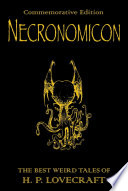-
-
Up-sticks
So, after almost 2 years at National Museums Scotland, I'm moving on. And not just me, Jenni's coming too (and Oskar, of course).
After delivering a kick-ass, ground-breaking website and implementing some cool shiny stuff, I feel confident I can move on having made a bit of a difference. I initially took the job for two main reasons:
- To bring advanced web-awesome to the cultural sector
- To prove my technical ability to myself at an international level
I'm happy I've done that. The National Museums Scotland site looks a lot nicer above and below the surface than it did when I and the rest of the web team arrived in 2009. Hopefully the systems and techniques I've put in place will ensure it stays at the front edge of the culture sector in terms of well-considered use of technology. The rest of the web team are still there, of course, and will continue to make cool stuff. I'll be satisfying my urge to build cool cultural stuff by providing the tech behind the various Museum 140 projects.
The second reason is just as important. Working on a large national organisation website made me triple-check everything I wrote but my desire to build ‘Cool Stuff’ meant that I couldn't play it too safe. Favourable reviews from .NET magazine and ReadWriteWeb suggest that we got the balance right.
Personal projects
In the last 12 months, I've also had a fair amount of success with my various personal tech projects – 8bitalpha, harmonious, The Elementals, Whithr, Shelvi.st as well as being a featured case study on phonegap.com. All of which have served to remind me I like the challenge of doing something beyond what I can already do.
Where now, then?
Now is the right time to step up from the top half of the First Division to somewhere in the middle of the Premier League (yeah, that's right, sport analogies). I'm going to be starting in July as Senior CSS Developer at Nokia in Berlin. I'll be working on the desktop interface for the services that used to be ovi.com (until a couple of weeks ago) building interface frameworks and UI components.
Nokia have been going through a bunch of changes recently so I'm excited to be joining them now when there's a great opportunity to make a significant difference on a big scale.
I've only been to Berlin twice (an upcoming blog post will give more details about that) and, despite being German, Jenni's never been so it'll be an interesting move. Berlin does, however, have over 170 museums so if there's anywhere Jenni can perform her particular brand of museum-wizardry, it'll be there. We've asked Oskar's opinion but he's not saying much. He's mostly drooling.
Über-curricular activities
I'm also hoping to give more conference talks and presentations (like ) as well as write more educational articles for this blog and others. I've got a few written that I've not had the chance to present anywhere so I might put them here at some point.
If you have any questions, throw a tweet in my direction.
-
HTML5 for Large Public Bodies
Your country needs you...
...to stand at the cutting edge of technology.
Sounds awfully impressive, don't you think?
There are quite a few regulations to bear in mind and comply with when developing a website for a Government organisation or any large public body. This has lead to a lot of sites being developed in a very defensive manner, ensuring safe compliance at the expense of a great and consistent user experience.
This video features a presentation about how large publicly-liable institutions should and can embrace the latest in web technologies without sacrificing standards. By embracing them, in fact.
The content of this was developed while planning and building the National Museums Scotland website which launched last November. The messages presented are applicable to museums, galleries, swimming pools, councils, anywhere, really.
If you're a techie person in the cultural or government sector, you might find this useful in convincing others to take advantage of the latest cool (and useful) technologies.
Video
HTML5 for Large Public Bodies from Simon Madine on Vimeo.
Links from the presentation
- PolyFills
- .NET magazine article
- (Almost) complete list of polyfills
- Dive into HTML5
- HTML5 Boilerplate
- Smashing Magazine
- HTML5 Doctor
- AlphaGov
Slideshow
The source for the slides is available online although it's mostly webkit-friendly. I realise the irony of a presentation about cross-platform HTML5 not being a great example itself of that but it does degrade adequately. If I get the time in the future, I'll tidy it up. An actual good (and relevant) example of cross-platform web technologies is the National Museums Scotland website itself which performs fantastically across all manner of platforms.
-
Instant art
I love making silly little digital toys. If I were more confident at talking waffle, I'd call them art and get a government grant to pursue the possibilities presented in projects integrating off and online expression and interaction and blah, blah, blah.
Anyway.
I took my 'Automatic Tumblr Art Maker' from last year and combined it with the hot new thing in town – Instagram – to make some kind of comment about the inherent nature of technology to remove the individuality from a composition and to put another barrier between the intention and reception. Or something. I dunno. It randomly generates a pseudo-meaningful statement and puts it on top of a randomly selected recent Instagram photo. It makes a new one every 15 seconds or you can click to generate one if you prefer your ironic art on demand.
I've also added a couple of nice little extras to it: the tweet button in the bottom right will let you share a link to the exact combination of image and statement you're looking at so if you find a particularly poignant/ironic/idiotic one, you can share it. Also, on the off-chance you fancy using it as a screensaver, making it fullscreen will hide that tweet button so as not to get in the way of The Art.
Go, make ironic Insta-art.
-
Archiving Tweets
Archiving Tweets - Technical
Twitter has an amazing amount of data and there's no end to the number of ideas a coffee-fuelled mind can come up with to take advantage of that data. One of the greatest advantages of Twitter – its immediacy, its currency, its of-the-moment-ness – is, however, also one of the drawbacks. It is very easy to find out what people are thinking about now, yesterday or a few days ago but trying to find something from more than a week ago is surprisingly tricky. The standard, unauthenticated search only returns the last 7 days of results, beyond that, there's nothing. You can get around this by building custom applications which authenticate themselves correctly with Twitter and provide a level of traceability but that's quite tricky.
The easiest way to archive search results for your own personal use is actually surprisingly simple. Every search results page includes an RSS feed link1. This will be updated everytime there are new results. Simply subscribe to this feed with a feed reader (Google Reader is simple and free) and your results will be archived permanently. This is great if you're searching for personal interest stuff but doesn't work so well if you want to share the results with the public.
This was the problem I was presented with when I was asked to build a tweet-archiving mechanism for Museum140's Museum Memories (#MusMem) project. Jenni wanted some kind of system that would grab search results, keep them permanently and display them nicely. I didn't want to create a fully OAuth-enabled, authenticated search system simply because that seemed like more work than should really be necessary for such a simple job. Instead, I went down the RSS route, grabbing the results every 10 minutes and storing them in a database using RSSIngest by Daniel Iversen. The system stores the unique ID of each Tweet along with the time it was tweeted and the search term used to find it. The first time a tweet is displayed, a request is made to the Twitter interface to ask for all the details, not only of the tweet, but also of the user who tweeted it. These are then stored in the database as well. This way, we don't make too many calls to Twitter and we don't get blocked.
If you want your own Tweet Archive, I've put the code on GitHub for anyone to use. It requires PHP, MySQL and, ideally, a techie-type to set it up.
Archiving Tweets - Non-technical
With the technical side out of the way, we're left with the human issues to deal with. If you're automatically saving all results with a particular phrase, all a malicious person needs to do is include that phrase in a spam-filled tweet or one with inappropriate language and suddenly, it's on your site, too. If you aren't going to individually approve each tweet before it is saved, you must keep a vigilant eye on it.
The other thing which has turned out to be a problem is the Signal-to-Noise ratio. When we initially decided on the hashtag #MusMem, nobody else was using it. To use Social Media parlance, there was no hashtag collision. The idea was to encourage people to use it when they wanted their memories stored in the MemoryBank. Unfortunately, it is now being used by anyone tweeting anything related to Museums and Memories. This is particularly troublesome at the moment as this month is International Museum month, one of the themes of which is ‘Memory’ (which is why we built the MemoryBank in the first place). This means that the permanent memories we want stored (the Signal) are getting lost in the morass of generic Museum Memories (the Noise). There is no way to solve this problem algorithmically. If we are to thin it down, we actually need to manually edit the several thousand entries stored.
If anyone can think of a solution to this issue, please let everybody know – the world needs you.






